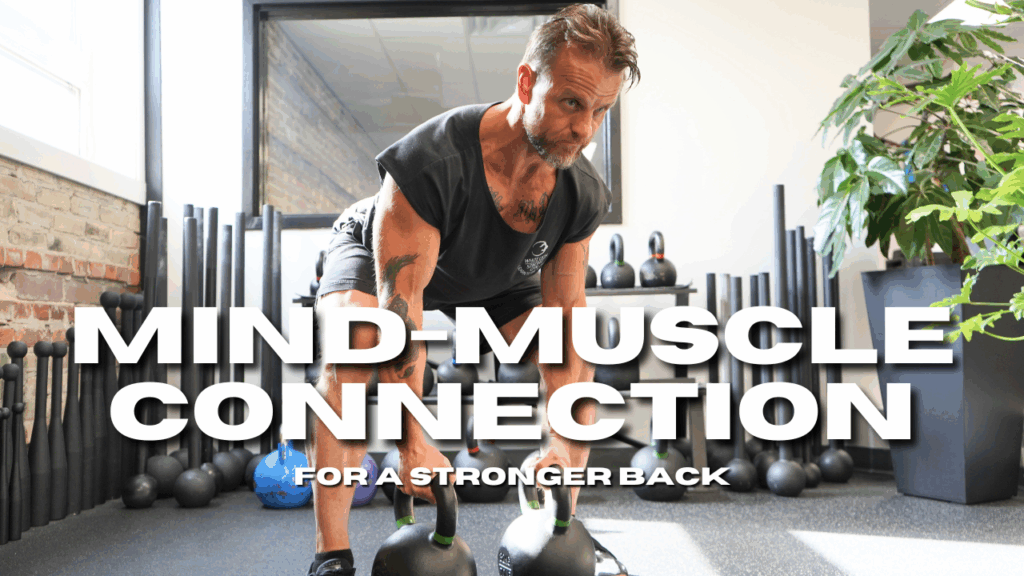
You can lift heavier, but if you don’t feel your lats working, you’re leaving gains on the table. The mind-muscle connection (MMC) is a proven tool to activate your back muscles better—especially during pulling exercises. Science shows it can boost lat activation by 15–30% when used right. In this post, we break down the research in plain English, show you exactly how to use MMC in your next back session, and give you a free 3-step drill to start feeling your lats today.
Why Your Back Workout Might Be Lying to You
You finish a set of rows. Your arms are fried. Your grip is shot. But your back? Feels… nothing.
Sound familiar?
You’re not weak—you’re just not connected.
The mind-muscle connection is the intentional focus on the muscle you’re trying to train. It’s like turning a dimmer switch from 60% to 100% on your lats. And yes, science backs it.
Let’s dive into the studies (without the jargon).
The Research: What Science Says About Feeling Your Lats
1. Light Weights + Focus = Big Activation Gains
Calatayud et al. (2016) had trained lifters do bench presses at different loads. When they focused on the target muscle (chest or triceps), activation jumped 10–20%—but only at lighter to moderate weights (20–60% of max). At 80%+, the boost disappeared.
What this means for you: Use MMC during your warm-up sets or hypertrophy work (8–15 reps). Try thinking “pull my elbows into my back pockets” on a seated row. You’ll feel your lats light up—without needing heavier plates.
Calatayud, P., Vinstrup, J., Jakobsen, M. D., Sundstrup, E., Andersen, L. L., & Colado, J. C. (2016). Importance of mind-muscle connection during progressive resistance training. European Journal of Applied Physiology, 116(3), 527–533. https://doi.org/10.1007/s00421-015-3305-7
2. One Simple Cue Can Rewire Your Brain
Andersen et al. (2010) tested untrained women on lat pulldowns. First round: basic instructions. Second round: expert cue—“pull with your back, not your arms.”
Result? Lat activation spiked 20–30% after the cue. Biceps stayed the same.
What this means for you: Words matter. Next time you do pull-ups or pulldowns, say out loud (or in your head): “Spread the floor with my lats.” It’s like giving your brain a GPS for muscle recruitment.
Andersen, L. L., Magnusson, S. P., Nielsen, M., Haleem, J., Wedderkopp, N., & Aagaard, P. (2010). Neuromuscular activation in conventional therapeutic exercises and heavy resistance training. Journal of Strength and Conditioning Research, 24(3), 625–631. https://doi.org/10.1519/JSC.0b013e3181c6c4d3
3. MMC Works… Until You’re Tired
Fujita et al. (2020) had people row to failure. With MMC cues, lat activation was 15% higher in the first 1–2 reps. But by the middle of the set? The difference vanished.
What this means for you: Use MMC early in your set. Do 1–2 perfect reps with full focus, then let momentum take over as fatigue sets in. This keeps form clean and prevents your arms from stealing the show.
Fujita, E., Kanehisa, H., Yoshitake, Y., Fukunaga, T., & Kawakami, Y. (2020). Effect of verbal instruction on muscle activity during the seated row exercise. Journal of Strength and Conditioning Research, 34(10), 2846–2853. https://doi.org/10.1519/JSC.0000000000003782
4. Strength vs. Growth: When to Use What
A 2021 meta-analysis by Grgic et al. compared internal focus (MMC) vs. external focus (“pull the bar to your hips”).
- External focus won for max strength (like heavy deadlifts).
- Internal focus showed slight edges for muscle growth in smaller muscles (like biceps—and likely lats).
What this means for you:
- Heavy pulls (deadlifts, weighted pull-ups): Think “drive the bar down” (external).
- Hypertrophy pulls (rows, pulldowns): Think “squeeze my lats like a sponge” (internal).
Grgic, J., Schoenfeld, B. J., & Latella, C. (2021). Internal vs. external focus during resistance training: A meta-analysis. Sports Medicine, 51(6), 1266–1278. https://doi.org/10.1007/s40279-021-01447-5
5. The Expert Verdict: It’s a Tool, Not a Religion
Menno Henselmans (2023) reviewed over 10 EMG studies. Bottom line: MMC boosts activation 10–17% at submaximal loads, but zero effect near failure or with explosive reps.
What this means for you: Don’t force it on every rep. Use it like a spotlight—shine it on your lats for the first 2–3 reps, then grind.
Henselmans, M. (2023). Mind-muscle connection: A review of the evidence. Stronger by Science. https://www.strongerbyscience.com/mind-muscle-connection
Your 3-Step Lat Activation Drill (Do This Before Every Back Session)
Time: 5 minutes Equipment: Light band or cable
- Scapular Pull-Aparts (10 reps)
- Hold a light band.
- Pull apart while thinking “spread my shoulder blades.”
- Pause 2 sec at the end.
- Dead-Stop Straight-Arm Pulldown (8 reps)
- Kneel in front of a cable.
- Arms straight. Pull down to hips only using lats.
- Cue: “Push the cable away with your armpits.”
- Iso-Hold Row (20 sec hold)
- Mid-row position. Hold and squeeze your back like you’re crushing a walnut between your shoulder blades.
Final Thought: Connection = Confidence
A stronger back isn’t just about lifting more—it’s about owning every rep. When you feel your lats fire, you train smarter, move better, and stand taller.
Start with the 3-step drill. Tag us @WhiteLionStrong on Instagram with #LatActivation—we’ll repost the best form checks.
Your back is waiting. Let’s wake it up.